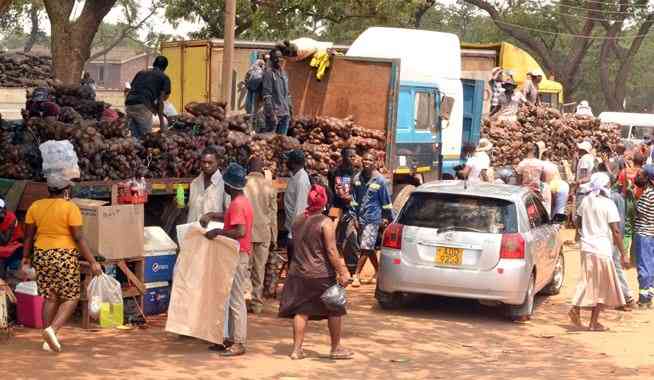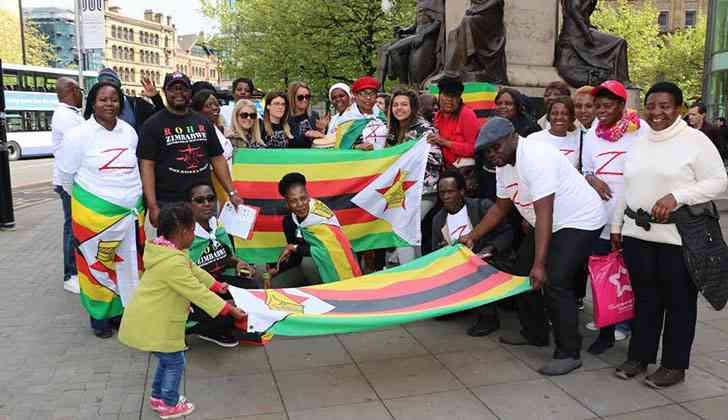
THERE are several reasons why most of the funding intended for agriculture and food systems has missed targets in African countries. The funding has been limited to production, ignoring mass food markets which handle and distribute more than 100 food commodities from production areas to scattered food markets and consumers. Women and youth comprise more than 80% of the traders whose capacity to grow their business continues to be hampered by lack of funding.
Although mass markets and food traders have enormous potential to repay loans, formal financial institutions like commercial banks and micro-finance institutions (MFIs) have failed to adjust their lending systems to accommodate mass market actors, leading to financial exclusion of these key actors in food value chains. In response, over the years, mass food markets, traders, vendors, transporters and small-scale processors have developed their own unique self-financing models which cannot be easily understood by formal financial institutions.
Territorial and relationship-based financial ecosystems have emerged around mass markets, turning mass markets into self-contained thriving economies. From working in mass markets over the years, eMKambo (www.emkambo.co.zw) has identified barriers that impede traders and other actors from participating in formal financial systems and such barriers include the following:
Obsession with traditional collateral
Across Africa, a key condition for borrowers such as banks and MFIs is collateral in the form of immovable property or household properties like stoves, refrigerators, televisions and others. Given that more than 85% of the traders are women and youth, they do not own or have control of such forms of collateral within households. In this case, traditional notions of collateral automatically exclude these groups from the financial system’s clientele base. Banks and MFIs have failed to recognise mass markets as stand-alone legitimate institutions whose businesses can be used as collateral to borrow. Despite working successfully in mass markets for 5 to 20 years, most food traders are still considered informal and inferior.
Emphasis on credit history
This is used against traders who, at one time, accessed to loans from banks and MFIs, but failed to repay mainly due to macro-economic shocks like hyper-inflation, drought or pandemics like COVID19. Upon loan re-application, banks still insist on the use of the colonial Financial Credit Bureau which is known for black-listing potential borrowers as bad debtors irrespective of new circumstances. Such a system prohibits some traders from accessing loans in formal financial systems for life.
Bureaucracy in loan processing In countries like Zimbabwe, it takes at least three weeks to a month for a bank loan application to be processed. Yet market traders who apply for loans expect to get funds within a week so that they can meet a certain target for example, pre-financing like buying inputs for farmers that will supply particular commodities upon harvest. Traders may also require quick funding for advancing payment to farmers for commodities like potatoes, cabbages, butternuts and others in order to secure the product against competitors. Quick funding can also be ideal for bulk purchasing and warehousing during the harvesting period as well as flexible loans during festive seasons when demand for certain commodities is at peak.
- Climate financing boon for Zim agriculture
- Climate financing boon for Zim agriculture
- Climate financing boon for Zim agriculture
- Africa hit hard by high e-waste pollution
Keep Reading
All these considerations are critical for ensuring traders are able to supply consistently. Given that formal financial systems are not flexible enough to accommodate these dynamics, loans are approved and disbursed when such business targets have passed.
Loan disbursement format
Mass markets buy and sell using cash. Sluggish adoption of digital technologies in trading is due to farmers’ unwillingness to accept mobile money or bank transfers. For example, in Zimbabwe it remains costly for farmers to convert mobile money transfers into cash because rural shop owners and other service providers like millers and transporters only accept cash for their products and services. It costs between 30 to 35% to convert mobile money into cash. This leaves traders in a catch-22 situation when banks and MFIs disburse loans through bank accounts or mobile phones. More so, cash withdrawals are limited despite the amount of loan one has borrowed. Consequently, borrowers start repaying loans with some loan amounts in their bank accounts as they struggle to convert it cash.
Delayed payments by formal buyers
Some traders supply formal markets like supermarkets, boarding schools, hotels and restaurants. However, these institutional markets pay after a period ranging from a week to a month. Such delays strain traders’ business operations since part of the restocking capital will be locked in invoices.
While mass markets struggle to access capital to grow their business, financing models by government, development organisations and the private sector continue to increase on the production side, leading to commodity gluts in some markets. Limited market buying power in the wake of increasing commodity supply suppresses commodity prices, leading to failure by traders and entire mass markets as institutions to recover resources in invested in trying to use agriculture and food systems for self-sustenance.
Self-financing models in African mass food markets
After realising that they are on their own, African mass food markets have not folded their arms but have developed their own financial models to keep their businesses afloat. Although these models have their own limits to be able to take mass markets, traders and other actors to the next levels of business growth, they are better than nothing. For traders graduating from one level of business growth to the next, the greatest barrier has been limited capital and recognition by other key economic actors including policy markets. The following have been part of the financial options:
Own savings
As part of creatively building a saving culture, mass market traders and other actors have become good at separating business from family. Money generated from business is secured in commodity stocks, not banks. Profits range from 10% to 50% but the amounts are sometimes too small due to low commodity quantities they hoard at any given time because of limited capital.
Agent model
Some traders have established strong relationships with farmers and this enables them to get commodities from farmers for free, trade on commission ranging from 5-10% and remit money to farmers in a win-win arrangement. In a related arrangement, traders can collect the produce from farmers’ production area or from farmers’ market when farmers bring them to the market (Hello-model). The hallo model is whereby traders take some farmers commodities to trade in the wholesale market while the farmer will be trading the other part of the stock in the farmers’ market. At closure of the farmers’ market, the farmer goes to the trader and say ‘Hello’ to collect the sales of stocks collected by the trader before. The greatest limitation of these models is that traders are not guaranteed of free supplies especially if the commodity is on high demand and there are competitors able to buy for cash from farmers.
Contract model
This is where traders buy inputs for farmers to produce for them and then deduct inputs costs during sale of produce. This model guarantees supply of commodities to the trader but exposes the trader to all risks as she/he invests in both market and production. If production is affected, for example by drought, the trader loses out on invested inputs.
“Rounds” model
A group of up to five traders come together and make equal contributions, say per day, per week or per month and take turns to take the contributed amount. This provides an opportunity for each member to buy meaningful stocks at once. Sometimes the rounds are disrupted if one member withdraws or fails to own-up the contribution to other members.
Short-term commodity loans
The market has a class of traders with capacity to bulk purchase commodities from farmers. Some small-scale traders then come and borrow stocks for on-ward selling and repay as they take more stocks. The commodity loans are settled by end of each day or the following day, in the case of vendors who sell in residential areas. This model is unviable if a commodity is in short supply and/or in high demand by cash buyers.
How about a revolving fund for mass food market?
Given barriers to access funding from financial systems by mass markets and traders as discussed above, institutions or individuals keen to finance agriculture through mass food markets should consider setting up an independent revolving fund for mass markets and their actors. The proposed revolving fund should build on already existing functional models in the market while focusing on addressing challenges faced by mass market traders in accessing capital from formal financial systems. The revolving fund can be structured in the following manner:
Provincial mass markets fund
Each province has mass markets located at district centres/growth points, towns and cities. Each market has its own committee that govern respective actors in each market. To that end, each province can be allocated a self-managed provincial fund. Through their committees, the markets can be capacitated to organise traders and other actors who will take turns to access and repay the revolving fund.
Infrastructure development fund
Most mass markets lack appropriate facilities for handling commodities. Part of the mass markets fund should be allocated to establishing market facilities like warehouses, cooling facilities and ripening facilities for diverse fruits like avocadoes, mangoes and bananas.
Market-driven production fund
This fund can be for supporting farmers with established relationships and contracts with specific mass market traders. Currently these farmers are supported by traders with inputs. In addition to individual farmers, the fund can also support selected irrigation schemes to produce commodities required by the markets at particular periods.
Vendors’ fund
This fund should target vendors who buy from mass markets for resell in residential areas. All vendors can be profiled from their areas of operation and organised in groups to self-manage their revolving fund.
Too important to be without a funding mechanism
African mass food markets are far too important to be left without a reliable and robust funding mechanism. The same attention given to production should be accorded mass food markets. Thousands of traders who often reach every corner of the country searching for commodities and ensuring farmers earn something for their sweat should be supported financially. While formal companies like grain millers and wholesalers are given foreign currency to import food, no support is given to traders who brave bad roads to collect food from marginalised African communities. Dedicated funding for these important actors can assist in building resilient food systems.











